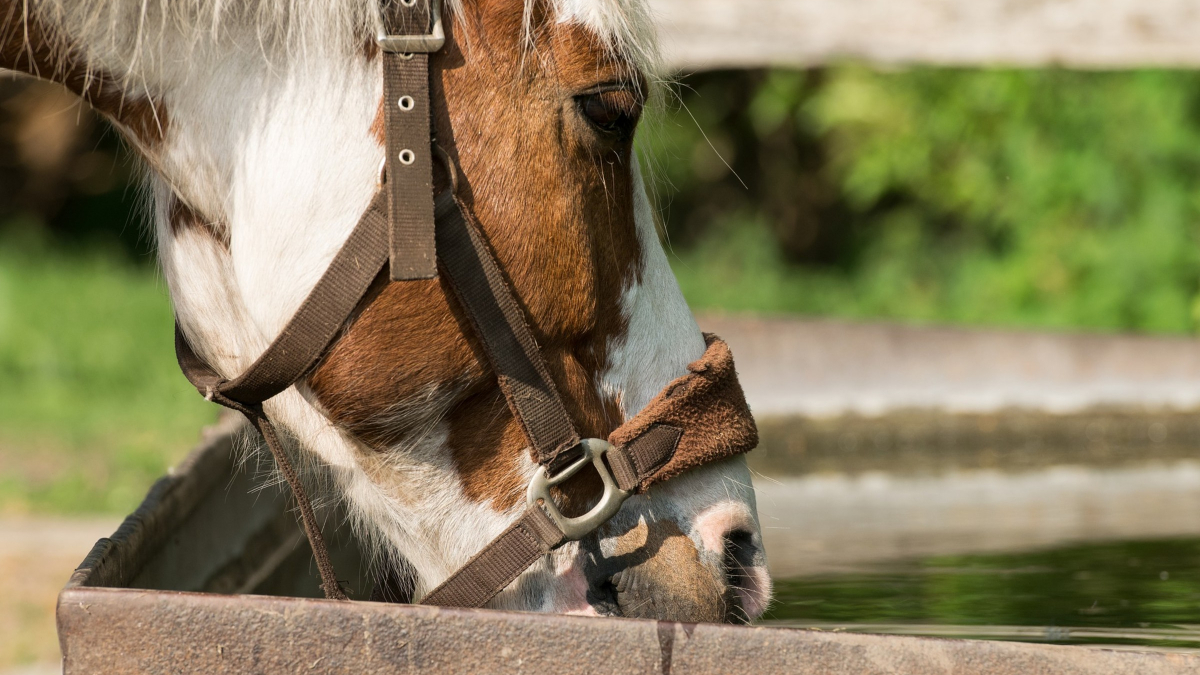The essential nutrient for horses is water. Caring for and watering horses in the winter, especially below freezing, can be very problematic. Horses, through the winter, must maintain their weight. How you feed and hydrate a horse is critical to the horse’s well-being and survival. A horse’s body condition includes avoiding any weight loss, which must be carefully monitored monthly, as the horse ages. In the cold months, water should be regularly accessible at all times and be above 40 degrees Fahrenheit (4.44 degree Celsius). Freezing water’s ice should be broken twice a day. If the horse is eating snow the water intake of a 1200-pound horse is not met. A horse, especially during cold weather, risks impaction colic. If the water is too cold for the horse to drink comfortably, this may contribute to impaction colic which reduces food intake leading to a loss of body condition. The horse must be provided shelter from cold rains and wind. Horses remain comfortable in cold weather if they are dry and have shelter from the wind. On average a horse to avoid colic, dehydration, and severe health risks including death need to consume 5 to 10 gallons of fresh water per day. A horse may refuse to drink and if it is not provided water to drink it may only live up to 3 to 6 days. A horse will refuse to eat if deprived by water for two days.
A horses water supply must be free of bacteria. The horse’s water rough must deliver fresh water in compliance with state and federal legislation. The better–designed troughs should have smooth rolled-top edges and rounded corners to ensure the safety of your animals. The material that constructs troughs are poly plastic and galvanized steel. It is not uncommon for the poly plastic, and steel water troughs have warranties of at least one year. The galvanized stock tank is the traditional trough. Poly plastic troughs have entered the market, and the consumer can now compare and contrast their features. The stock tanks size for both materials run from 25 to 800 gallons. 
Is one tank’s material better and last longer in determining the better tank or is it merely ones personal preference.? How a tank drains is different between the plastic and steel tanks. This difference is essential in the winter because of ice. The plastic tank has a removable drain plug at the ground level and screws into the bottom of the tank. Inserted in the drain plug is a wire loop which is heated, melting the ice and acts as a deicer. The deicer plug is a major benefit of the plastic trough, which unlike the traditional deicer, stops a horse from pulling out the deicer and is less expensive than the traditional tank heater which sinks to the bottom of the tank. Over time algae will develop in the tank in the summer and becomes a problem it the water is unpalatable and the horse refuses to drink, threatening dehydration and colic. The steel tank easily cleans algae with a brush. The poly plastic tank takes more effort to clean out. Poly tanks degrade more because of ultraviolet light and can become very brittle. The steel tank can withstand the kicks of a horse and can be repaired. The costs of both tanks are comparable.






